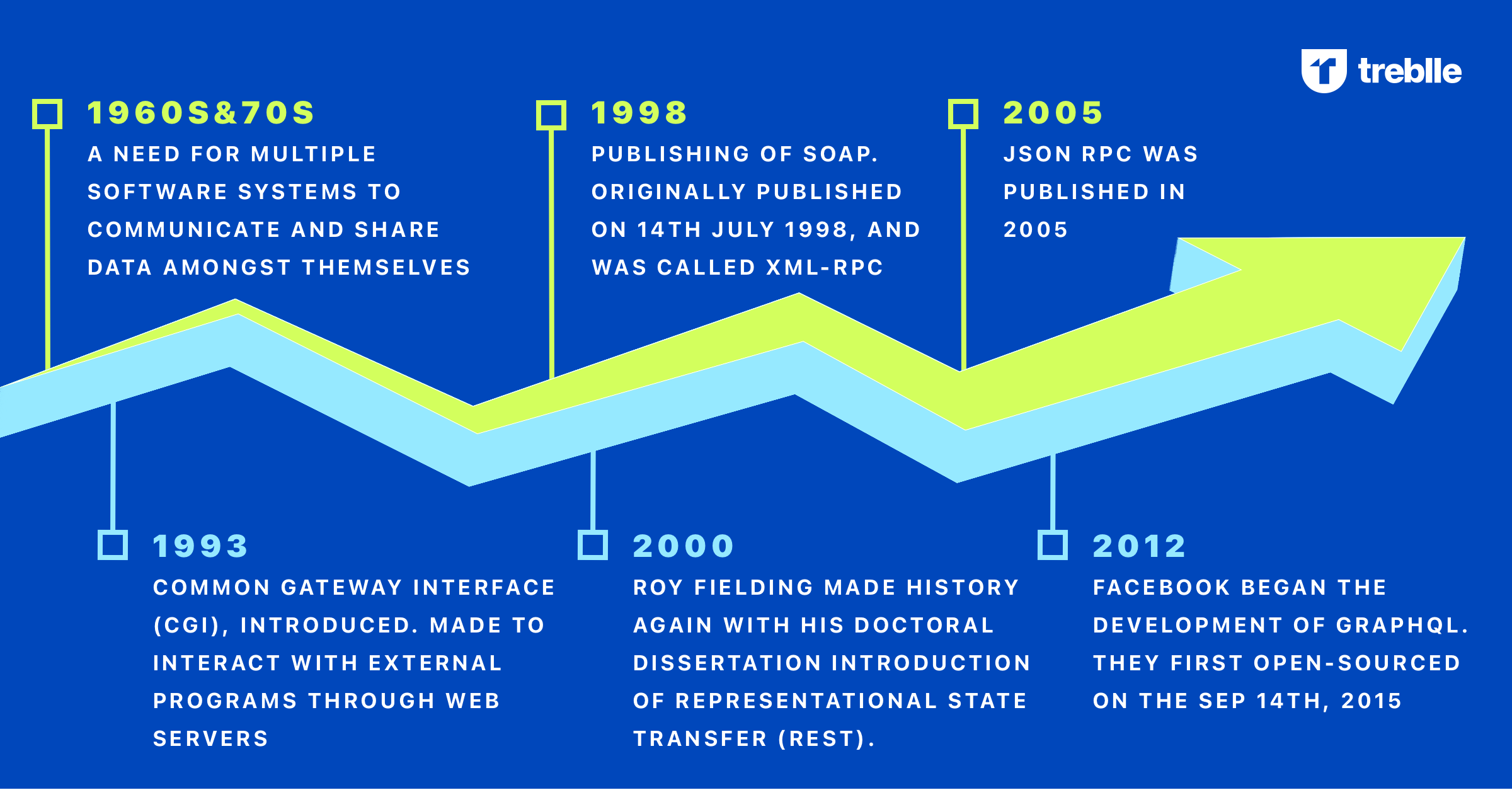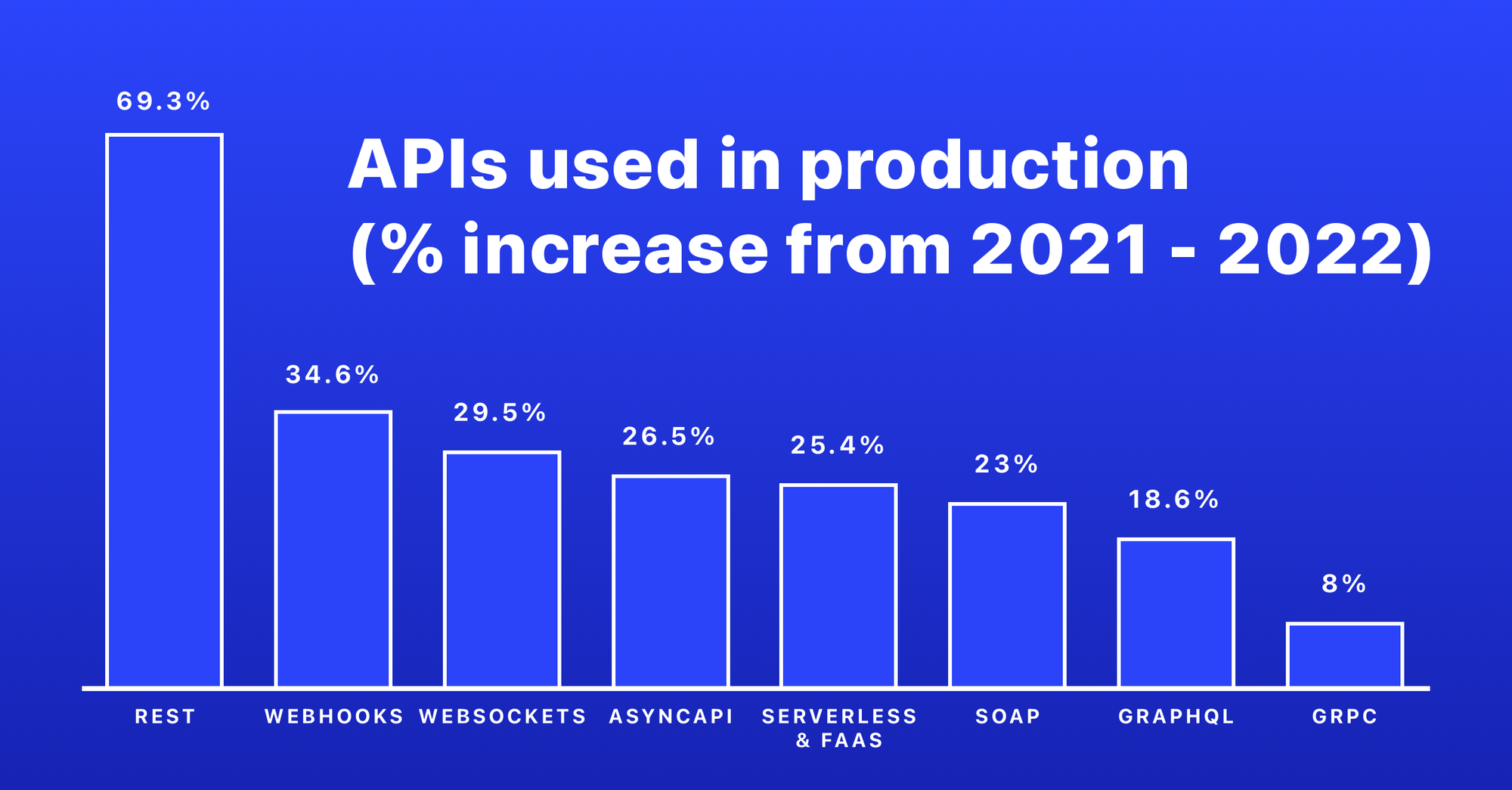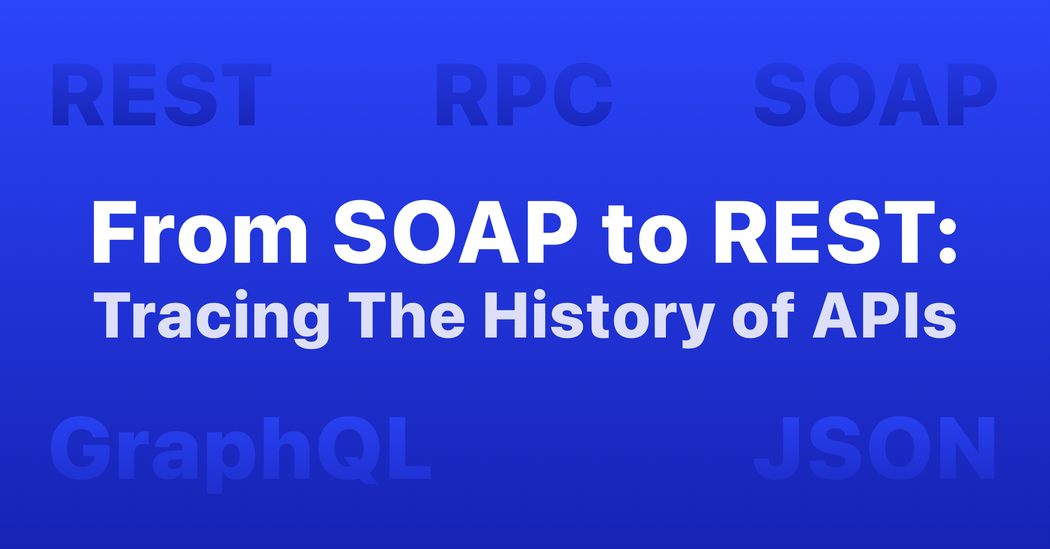Application Programming Interfaces (APIs) play an indispensable role in today's hyper-connected digital landscape, facilitating effective communication and integration among various software systems. APIs act as the bridge that allows different apps to interact, share data, and collaborate efficiently while offering a standard set of rules and protocols to facilitate building, managing, and scaling complex software architectures more quickly and efficiently. This article introduces APIs as key facilitators of connectivity within today's technological environment.

APIs Are A Gateway To Connectivity
An API, in its most basic sense, is a set of rules and protocols that define how software components should interact. It acts as an intermediary layer by abstracting away the complexity of underlying systems while providing developers with access to specific functionalities or exchanging data with external sources. APIs come in different forms such as web APIs, operating system APIs, database APIs or others; all serve to empower developers in building applications that interact with third-party services, access external data sources, or expose internal functionalities to external developers.

One of the key benefits of APIs lies in their capacity to promote integration and interoperability. Organizations rely on many software systems ranging from customer relationship management (CRM) platforms, payment gateways, social media networks and APIs allowing these disparate systems to communicate seamlessly - for instance, an e-commerce website may use payment gateway APIs securely process transactions while taking advantage of social media APIs to facilitate social sharing and engagement - using APIs allows businesses to combine power from disparate systems into a cohesive experience for users.
APIs also promote flexibility and scalability in software development, providing developers with a way to encapsulate complex logic within an abstraction layer that shields other parts of the system from unnecessary complexity. This modular approach to development facilitates simpler maintenance, updates and enhancements; developers can modify an API implementation without disrupting systems that rely on it. APIs allow organizations to quickly integrate third-party services or applications, making use of specialized tools and services without reinventing the wheel easier than ever. Their flexibility and scalability encourage innovation while giving developers an efficient method for developing robust apps with abundant features.
APIs serve as the gateway to digital connectivity, facilitating smooth communication and integration among different software systems. By offering standardized rules and protocols, APIs simplify building, managing, and scaling complex software architectures; promote integration and interoperability among disparate systems to collaborate effectively and share information; foster flexibility and scalability while empowering developers to build modular and easily maintainable apps; furthermore they play an essential role in driving innovation and connectivity across various industries. As technology continues to advance, APIs, which are instrumental in solving major challenges in the fintech industry, will play an increasingly pivotal role in driving innovation and connectivity across industries.
The TL;DR - A Potted History
Application Programming Interfaces (APIs) have become ubiquitous in our technological landscape, but their roots can be traced all the way back to early computing days. In this article, we will investigate their origins as well as explore protocols and standards which form their base today.
As computers began to be utilized as powerful tools in the 1960s and 70s, a need arose for multiple software systems to communicate and share data amongst themselves. As a result, early protocols and standards emerged which served as the building blocks of APIs such as Common Gateway Interface (CGI), introduced in 1993 - November 17th to be precise, to interact with external programs through web servers. CGI allowed web servers to invoke scripts or programs that generated content quickly on-demand allowing dynamic pages. Rob Mccool posted this message to the www-talk mailing list, which quickly became the standard in use at the time.

Roy Fielding made history again with his doctoral dissertation introduction of Representational State Transfer (REST) in 2000. REST revolutionized web services design and implementation by emphasizing stateless resource-oriented architecture. Based on these principles, RESTful APIs quickly gained popularity for their simplicity, scalability, compatibility with existing web infrastructures and standard way of interrogating them. HTTP methods like GET, POST, PUT, and DELETE are used for operation on resources providing a uniform and standard way to interact with web-based services.
As well as REST, other protocols and standards have risen over time to address specific requirements and use cases. One such standard was Simple Object Access Protocol (SOAP), an XML-based messaging protocol for exchanging structured information over web services. SOAP provided an organized way for applications to communicate by standardizing message formats, communication patterns, and error-handling rules.
These early protocols and standards laid the groundwork for modern API development. They created interoperability among various software systems, enabling developers to build distributed apps that communicated effortlessly between themselves. As technology advanced further, new protocols like GraphQL emerged to offer greater data query flexibility for clients as they specified their data needs precisely.
APIs owe their existence to early protocols and standards that paved the way for efficient communication and integration between software systems, from CGI's ability to generate dynamic web content to REST's stateless resource-oriented architecture - these protocols and standards were the precursors to modern API development. Today APIs continue to evolve to adapt to changing technologies and requirements while playing an essential role in connecting various industries together and fostering innovation across sectors.

SOAP: a great starting point for the web
Early on in API development, one protocol that saw widespread adoption was SOAP (Simple Object Access Protocol). SOAP quickly established itself as a standard messaging protocol for web services and offered robust API communication - yet developers had to navigate its inherent complexities as part of its strengths. In this article, we'll look at SOAP as one such early and widely adopted protocol, while discussing both its robustness and complexities that have to be managed.
SOAP was introduced in the late 1990s as an XML-based messaging protocol for exchanging structured information between applications via web services. It provided a standardized way for applications to communicate, with rules covering message formats, communication patterns, and error handling governing its use. One key advantage of SOAP was its support for various transport protocols like HTTP and SMTP making it adaptable and versatile in different networking environments. Here’s the original announcement (as archived) from Dave Winer’s own site. Originally published on 14th July 1998, this was when SOAP was called XML-RPC.

One of SOAP's key strengths lies in its robustness. It provides a highly structured and strongly typed messaging framework, supporting complex data structures with extensive metadata. SOAP allows developers to specify message formats in detail to ensure reliable and consistent communication across systems - making SOAP an excellent choice for industries requiring stringent security and compliance standards, such as healthcare and finance.
But SOAP's robustness also comes with its own set of challenges. Its XML-based messages add verbosity, leading to larger message sizes than other protocols and potentially impacting network performance and latency in cases with limited bandwidth. Furthermore, its message structure and stringent specifications may make working with SOAP difficult for developers - with parsing and generating messages being required as well as managing complex headers and security mechanisms which add time and complexity to developing SOAP-based APIs.
SOAP's complexity extends beyond its adoption and interoperability issues; various platforms and programming languages may offer differing levels of support and compatibility with it, making seamless integration across diverse systems difficult. Furthermore, its rigid specifications can impede the flexibility and agility necessary in rapidly evolving environments where quick iterations and adaptability is crucial.
SOAP remains widely utilized despite its complexity, with enterprises such as enterprise software, financial services and healthcare often using SOAP-based APIs to ensure secure communication among their systems.
SOAP was one of the early and widely adopted API protocols, providing a robust approach to API communication. Its structured messaging framework offered both reliability and security, making SOAP attractive for industries with stringent requirements. Unfortunately, however, its complexity, verbosity, and interoperability issues made it less desirable in more agile or resource-constrained environments. As technology progressed, newer protocols emerged offering alternatives that addressed its limitations while maintaining robustness and simplicity.
REST: improving from where SOAP left off
Representational State Transfer (REST), in contrast with SOAP's complex and weighty structure, emerged as an easier and lighter approach for creating web APIs. REST revolutionised web service design and implementation practices focusing on simplicity, scalability and compatibility with existing web infrastructures. We will discuss its principles while outlining its advantages over SOAP in this article.

REST stands on a set of architectural principles designed to provide a lightweight and flexible framework for web API development. At its heart lies resources, each of which are identified with unique URIs (Uniform Resource Identifiers). Users can access resources through standard HTTP methods like GET, POST, PUT and DELETE, which map to common CRUD (Create, Read, Update and Delete) operations to access and interact with them intuitively.
REST's primary advantage lies in its ease of use: RESTful APIs take advantage of HTTP, which has long been widely supported across web servers and clients, to facilitate rapid development. REST also makes data exchange simple: data can be exchanged using lightweight formats like JSON (JavaScript Object Notation) or XML for easy consumption across platforms and programming languages.
Scalability is another advantage of RESTful APIs. By capitalizing on HTTP's stateless nature, these APIs don't store client-specific session information on the server; each request from the client contains all of the information needed by the server for processing; thus promoting horizontal scaling and enabling RESTful APIs to efficiently handle high traffic loads.
REST provides loose coupling between the client and server. A server exposes resources with unique URIs for clients to interact with independently; this decoupling allows the server to evolve or change its internal implementation without disrupting clients, as long as its URI structure remains consistent. This flexibility facilitates easier maintenance, upgrades, or the introduction of new features without disturbing existing clientele.
Comparable to SOAP APIs, RESTful APIs offer a simpler and lighter solution for developing web APIs. Their simplicity, compatibility with existing infrastructure and support for lightweight data formats contribute to its widespread adoption; further aligning well with modern web principles as it suits a range of use cases from simple data retrieval through complex business processes.

REST has revolutionised web API development by offering a lightweight approach compared to SOAP. Its resource-oriented architecture, use of HTTP methods and lightweight data formats make REST simple for all involved to understand, develop, consume, and maintain. Furthermore, its loose coupling properties and compatibility with existing infrastructure make REST an obvious choice when building modern web APIs.
The Next Big Thing: JSON-RPC or GraphQL
As API development evolved, two notable advancements emerged: JSON-RPC (Remote Procedure Call) and GraphQL. These technologies presented novel approaches to API communication while fulfilling specific requirements found in modern applications. In this article, we'll explore these developments while also highlighting their benefits and discussing use cases within modern software development environments. JSON RPC was published in 2005 - here are the original specifications.

JSON-RPC is a lightweight remote procedure call protocol designed to facilitate communication between clients and servers via JSON (JavaScript Object Notation) messages across a network. JSON-RPC simplifies invoking methods or procedures on remote servers by offering a standard format for structuring requests and responses, and developers can create methods with parameters; clients then use simple JSON payloads to invoke them from anywhere within an application or microservice architecture.
With its easy implementation process and lightweight communication protocol features like JSON-RPC has made itself well suited for IoT devices, real-time applications and microservice architectures environments - perfect solutions where lightweight communication protocols such as IoT devices or real-time applications are needed; examples would include IoT devices, real-time applications and microservice architectures environments where lightweight communication protocols must be in use; similar scenarios include IoT devices, real-time applications and microservice architectures where lightweight communications protocols such as microservice architectures need lightweight communication protocols - perfect scenarios where lightweight communications protocols such as IoT devices real time applications and microservice architectures are required such as IoT devices real time applications and microservice architectures need lightweight protocols efficiently so suited as IoT devices real-time applications or microservice architectures which need microservice architectures or microservice architectures architectures need lightweight communication protocols used such as IoT are required; such as IoT devices real-time apps or microservice architectures architectures need efficient communications protocols are necessary as microservice architectures require lightweight communication protocols used.
JSON-RPC stands out as an efficient protocol, eliminating the need for extensive metadata and complex message structures, leading to smaller message sizes compared to other protocols and reducing network bandwidth usage and response times. Furthermore, its support of both synchronous and asynchronous communication enables it to handle various requests/responses more easily than others.
GraphQL marked a paradigm shift in API development by offering a flexible yet efficient method for data querying and manipulation. While traditional RESTful APIs offer predefined endpoints and fixed data structures, GraphQL allows clients to specify their data requirements precisely with one request: they can request specific fields, filter data based on parameters, and retrieve related data in one go--reducing over-fetching or under-fetching of data altogether. GraphQL's flexibility and efficiency make it ideal for applications with complex data needs such as social networks, e-commerce platforms, or data-intensive applications with complex data requirements like social networks, e-commerce platforms, or data-intensive apps. In 2012, Facebook began the development of GraphQL. They first open-sourced the September 14th, 2015.
One of the key advantages of GraphQL is its ability to increase front-end development productivity. Developers using GraphQL can quickly retrieve only the exact data they require without making multiple roundtrips back and forth to the server or processing large payloads of unnecessary information, leading to faster development cycles and enhanced performance. Furthermore, its powerful introspection capabilities enable powerful tooling, automatic documentation generation, and easy exploration of available schema - further enriching developer experiences.
GraphQL facilitates versioning and backward compatibility by enabling clients to specify exactly which version of an API they require, thus avoiding breaking changes and enabling smooth development over time. Furthermore, it fosters collaboration between frontend and backend teams by offering them an agreement between them - the frontend team can iterate on data requirements independently without needing changes on either end; decreasing dependencies while enabling agile development processes.
JSON-RPC and GraphQL represent advancements in API development, each serving to address specific needs in modern applications. JSON-RPC offers a lightweight yet efficient remote procedure call protocol suitable for scenarios requiring simplicity and performance while GraphQL offers a flexible data querying and manipulation approach, increasing frontend development productivity while supporting data-intensive applications. Both JSON-RPC and GraphQL have found their place within contemporary software development, expanding API capabilities further in today's interconnected world.
APIs For Mobile and Web Applications: The Mainstay Of Making It Easy
Application Programming Interfaces (APIs) have become an indispensable part of web and mobile app development, serving as an essential building block in creating powerful software ecosystems. They have revolutionized how developers create applications by providing seamless integration between external services, data sources, and functionalities - and developers' application development practices. In this article, we'll demonstrate their significance as they have become integral parts of establishing robust software ecosystems.

APIs have grown increasingly popular due to their need for interoperability and integration in today's digital environment. Applications often interact with a range of services - such as social media platforms, payment gateways, mapping services and data analytics tools - in order to remain viable. APIs serve as the link between various software components that allows seamless collaboration. They empower developers by giving them access to third-party services or tapping into external data sources while expanding functionality with access to additional tools or services.
APIs play an essential part in improving user experiences. By taking advantage of APIs, developers can leverage the functionalities and data from other applications for creating a seamless and unified user journey - for instance, a travel booking app can connect with an airline API to access real-time flight info, enabling customers to book flights directly within its app.
Similar to social media apps, social media applications can take advantage of APIs provided by various platforms to seamlessly enable sharing, authentication and social interactions. APIs enable developers to tap into existing services' power while also adding features and capabilities that would otherwise take too much time or resources to create themselves from scratch.
APIs have proliferated platform ecosystems with their use, as companies expose services and functionalities to external developers through APIs, allowing them to build upon and extend platforms through API calls. This approach has fostered vibrant developer communities around a core platform - such as app ecosystems on social media like Facebook or Twitter or plugin ecosystems in content management systems such as WordPress - with APIs acting as the backbone. APIs help developers extend existing platforms while creating value-added solutions.
APIs have become an indispensable element in web and mobile app development, helping ensure interoperability, integration, and enhanced user experiences by enabling applications to communicate seamlessly. APIs have revolutionized the way developers build applications, enabling them to tap the power of external services, access multiple data sources, and extend functionality beyond what their software could do otherwise. Over the last decade, as the mobile web introduced the need for faster applications and websites, APIs have become more of a necessity. This evolution has been well-documented in our comprehensive guide on API versioning. APIs have also played a pivotal role in the growth of platform ecosystems, empowering external developers to take part in creating powerful software ecosystems on both web and mobile platforms. As connectivity and integration become ever more vital components, APIs will continue to form key building blocks of successful software ecosystems in both fields.

APIs have had an incredible journey since their first appearance as protocols and standards in the 1960s, to their more modern forms like REST, JSON-RPC, and GraphQL - they have revolutionized how software systems communicate with one another and integrate. Furthermore, APIs serve as the backbone for web and mobile app development allowing seamless connectivity while opening up endless opportunities for developers and businesses alike.
APIs have transformed from basic rules and protocols into advanced interfaces that empower developers to craft robust and interconnected software ecosystems. APIs serve as a standardized and efficient means of communication among disparate systems, allowing disparate entities to work together seamlessly without difficulty sharing information effortlessly. APIs serve as gateways of connectivity by connecting applications to external services, data from diverse sources, or by augmenting functionalities with specialized tools or services.
APIs have made an indelible mark on modern technology. They have revolutionized user experiences by enabling applications to provide seamless integrations and access to a vast selection of functionalities, while simultaneously increasing interoperability by enabling different software systems to coexist in harmony and fostering innovation by encouraging platform ecosystems and developer communities that create value-added solutions and integrations.
APIs have opened a world of opportunity for developers, providing them with the building blocks and tools needed to craft innovative apps, leverage external services, and unleash data power. APIs have made development simpler while simultaneously increasing flexibility and scalability within software architectures - freeing developers up to focus on crafting unique experiences rather than dealing with complex systems directly.
Businesses have also seen many advantages from APIs. They've helped expand offerings, penetrate new markets and form strategic alliances while streamlining service integration to provide added-value solutions and improve products. Furthermore, APIs open new revenue streams while improving operational efficiencies by enabling organizations to take advantage of specialized services and technologies without recreating the wheel themselves.
APIs have come a long way from their early roots to becoming the cornerstone of modern technology. Their history is marked by innovation, standardization and the pursuit of connectivity. APIs have revolutionized how software systems communicate by providing seamless integration, enhanced user experiences and encouraging innovation. They have opened up limitless possibilities to developers and businesses for creating powerful software ecosystems; driving connectivity, innovation, and growth across industries in their wake.






